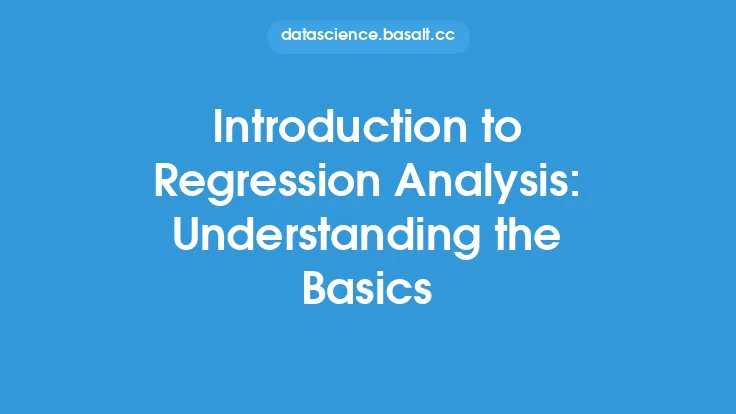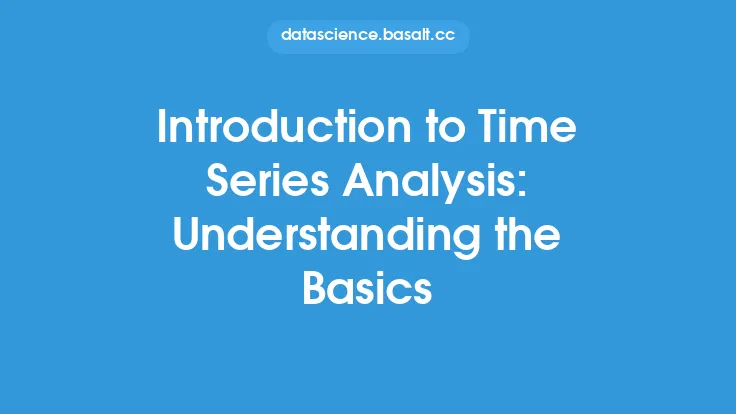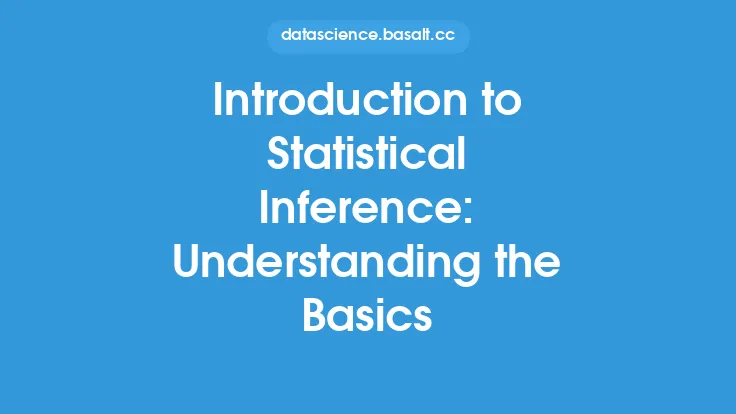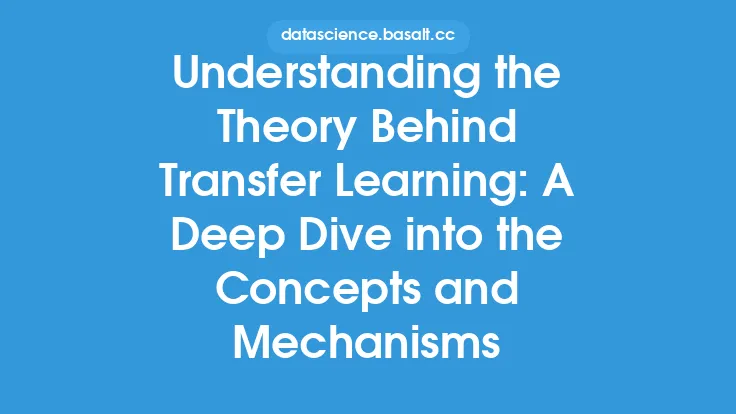Hierarchical clustering is a type of unsupervised learning algorithm that groups similar objects into clusters based on their features. It is called "hierarchical" because it builds a hierarchy of clusters by merging or splitting existing ones. This technique is widely used in data analysis and machine learning to identify patterns, relationships, and structures in data.
Introduction to Hierarchical Clustering
Hierarchical clustering is a versatile and powerful technique that can be used to cluster data of varying sizes and complexities. It works by creating a tree-like structure, known as a dendrogram, which illustrates the relationships between the clusters. The dendrogram is constructed by recursively merging or splitting clusters until a stopping criterion is reached. The resulting hierarchy of clusters can be cut at different levels to obtain clusters of varying sizes and densities.
Types of Hierarchical Clustering
There are two main types of hierarchical clustering: agglomerative and divisive. Agglomerative clustering starts with each data point as a separate cluster and recursively merges the closest clusters until only one cluster remains. Divisive clustering, on the other hand, starts with all data points in a single cluster and recursively splits the cluster into smaller ones until each data point is in its own cluster. Agglomerative clustering is more commonly used due to its simplicity and efficiency.
Distance Metrics and Linkage Criteria
Hierarchical clustering relies on distance metrics to measure the similarity between data points. Common distance metrics used in hierarchical clustering include Euclidean distance, Manhattan distance, and cosine similarity. The choice of distance metric depends on the nature of the data and the specific problem being addressed. In addition to distance metrics, linkage criteria are used to determine which clusters to merge or split. Common linkage criteria include single linkage, complete linkage, and average linkage. Single linkage merges clusters based on the minimum distance between any two points in the clusters, while complete linkage merges clusters based on the maximum distance between any two points. Average linkage merges clusters based on the average distance between all points in the clusters.
Hierarchical Clustering Algorithms
Several algorithms are available for hierarchical clustering, including the single linkage algorithm, complete linkage algorithm, and Ward's algorithm. The single linkage algorithm is simple and efficient but can be sensitive to noise and outliers. The complete linkage algorithm is more robust to noise and outliers but can be computationally expensive. Ward's algorithm is a compromise between the two and is widely used in practice. Other algorithms, such as the centroid linkage algorithm and the median linkage algorithm, are also available but are less commonly used.
Advantages and Disadvantages of Hierarchical Clustering
Hierarchical clustering has several advantages, including its ability to handle clusters of varying densities and sizes, its robustness to noise and outliers, and its interpretability. The resulting dendrogram provides a visual representation of the cluster hierarchy, making it easy to identify patterns and relationships in the data. However, hierarchical clustering also has some disadvantages, including its computational complexity, its sensitivity to the choice of distance metric and linkage criterion, and its difficulty in handling high-dimensional data.
Applications of Hierarchical Clustering
Hierarchical clustering has a wide range of applications in data analysis and machine learning, including customer segmentation, gene expression analysis, image segmentation, and text classification. It is particularly useful in situations where the number of clusters is unknown or where the clusters have varying densities and sizes. Hierarchical clustering can also be used as a preprocessing step for other machine learning algorithms, such as k-means clustering or principal component analysis.
Real-World Examples of Hierarchical Clustering
Hierarchical clustering has been successfully applied in various real-world domains, including marketing, biology, and computer vision. For example, in marketing, hierarchical clustering can be used to segment customers based on their demographic and behavioral characteristics. In biology, hierarchical clustering can be used to analyze gene expression data and identify patterns of gene regulation. In computer vision, hierarchical clustering can be used to segment images and identify objects of interest.
Common Challenges and Limitations
Despite its many advantages, hierarchical clustering also has some common challenges and limitations. One of the main challenges is the choice of distance metric and linkage criterion, which can significantly affect the quality of the clusters. Another challenge is the computational complexity of hierarchical clustering, which can be prohibitive for large datasets. Additionally, hierarchical clustering can be sensitive to noise and outliers, which can affect the accuracy of the clusters. Finally, the interpretation of the resulting dendrogram can be challenging, particularly for high-dimensional data.
Best Practices for Hierarchical Clustering
To get the most out of hierarchical clustering, several best practices should be followed. First, the choice of distance metric and linkage criterion should be carefully considered, and the sensitivity of the results to these choices should be evaluated. Second, the data should be carefully preprocessed to handle missing values, outliers, and noise. Third, the computational complexity of the algorithm should be considered, and approximations or parallelization techniques should be used if necessary. Finally, the resulting dendrogram should be carefully interpreted, and the clusters should be validated using external criteria, such as domain knowledge or other machine learning algorithms.
Future Directions and Open Research Questions
Hierarchical clustering is a mature and well-established technique, but there are still many open research questions and future directions. One of the main areas of research is the development of more efficient and scalable algorithms for hierarchical clustering, particularly for large and high-dimensional datasets. Another area of research is the integration of hierarchical clustering with other machine learning techniques, such as deep learning or transfer learning. Finally, the application of hierarchical clustering to new domains and problems, such as single-cell analysis or natural language processing, is an active area of research and development.





